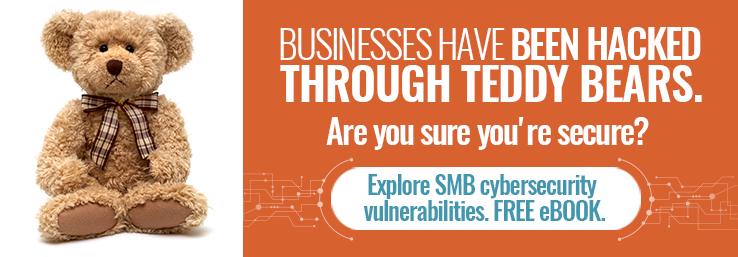Proactive Network Monitoring Helps With Data Security
February 1st, 2017 | 4 min. read


So I was watching TV the other day and that LifeLock commercial came on – again. This time though it made me think of our own proactive monitoring services.
You know the commercial, right? Bank robbers burst into a bank lobby and everyone hits the floor – except the “security guard.” He quickly identifies himself as a “security monitor” and helpfully informs patrons that the bank is being robbed.
About as useful as locking the barn door after the horse escapes, right?
Proactive network monitoring through managed IT services does enhance security for businesses. While much of the focus is on ensuring network uptime and preventive maintenance, part of guaranteeing uptime is ensuring security software is in place and up-to-date – the boring, repetitive, CRITICAL task of patching and updating security software.
Proactive Security
In a secure network, the bank doors are securely locked (the back door and air vents too) with an active “security guard” working to prevent threats from penetrating your network.
Don't sleep on security either. SMBs are increasingly targeted by hackers seeking to steal data and by ransomware.
Of course it's important to prevent security breaches to your network – firewall protection and updated and patched antivirus software.
What are other proactive security steps to take for your business?
BYOD (bring your own device)
Whether your employees are doing business and working on their phones, tablets, or computer; you need to have a policy and guidelines to prevent sensitive data from being hacked or stolen from those devices.
BYOA (bring your own apps)
How many of you have loaded company information to a personal Dropbox account to allow yourself to work on a project at home – and to get around file size limits on email? Cloud apps can be a boon to productivity for everyone; have a security and use policy to protect your business and data.
Backup, Backup, Backup
Backing up your company information is more than being able to recover a document on your laptop if it crashes. Every business should have a backup plan for their information. Read about common SMB backup mistakes in our free eBook,click here.
Inventory Your Software and Hardware
Do you have hardware and software with access to your network that are no longer in regular use? These could be potential entry points into your network for agile hackers as forgotten programs and hardware aren't updated and patched, yet remain open to the Internet.
Passwords
Practice basic password hygiene. No pets, birthdays, schools, or other easily guessed information for security questions. Use a mix of numbers, letters, and characters – upper and lower case. Routinely change passwords. Don't use personal passwords for work. When employee's leave, change the passwords for any apps they had access to.
Have a Policy
The most important step is the most basic one – have a data security policy for your information and devices AND be sure your employees understand it.
For more information on everything to do with Managed IT Services, check out our resource page, here.
While we can't help you if you're ever in a bank with a “security monitor” on duty, we do know how to proactively manage and secure networks for business. Regardless of whether your outsource security or try to take care of it in house, please don't ignore it.
Mo is the resident IT go-to lady at AIS. She has traveled the world, run a marathon, is a self-proclaimed crossword champion, and can do ventriloquism. She has an uncanny memory ....down to the detail. She has completed 4 half marathons and hates running. In her free time, she likes to spend time with her 7 siblings and 20 nieces and nephews.
Topics:


